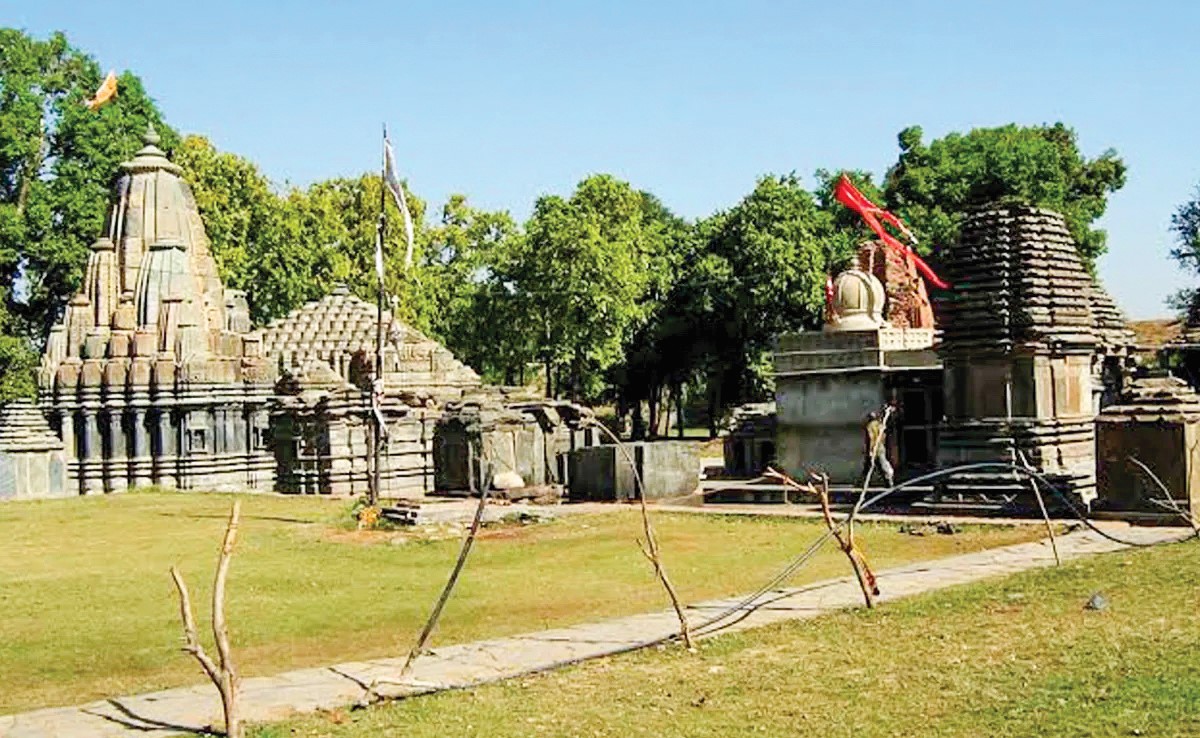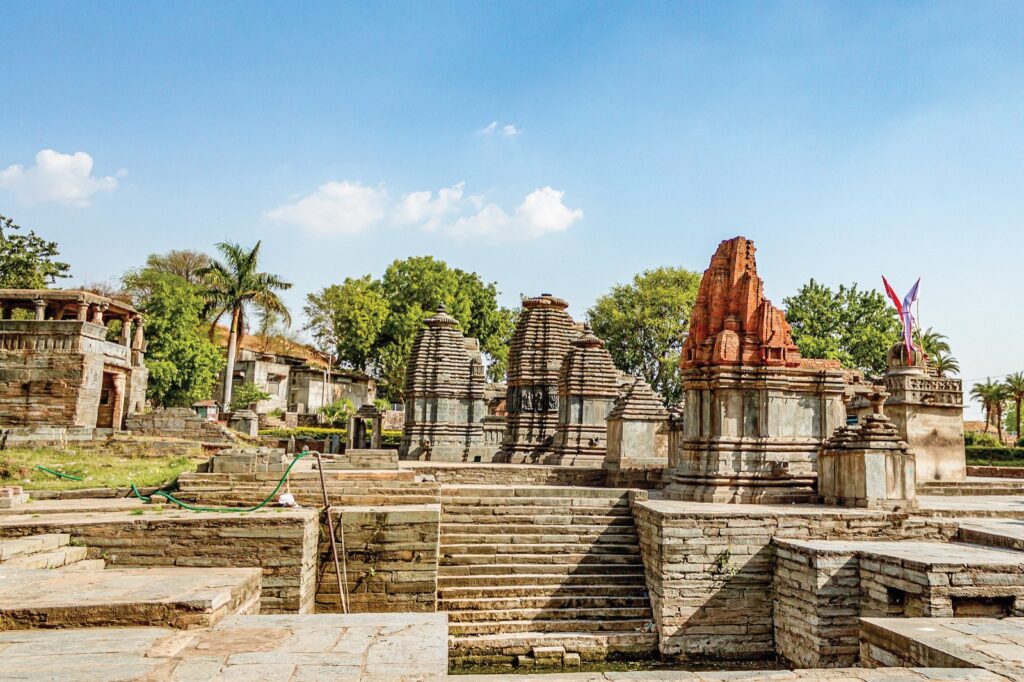
Welcome to Arthuna, a place where the remnants of a beautiful history lasting over a century seem to have stood still. Unknown to most, the site provides an original combination of religious importance, cultural legacy, and archeological discoveries that will surely captivate any adventure seeking tourist.
The Ancient Capital of Vagad
Entering Arthuna takes you not only to a village but also to the 11th and 12th centuries, when this charming community was known as Utthunaka. During this golden age, Arthuna served as the proud capital of the Paramara kings of Vagad, a historical area that previously flourished in this portion of Rajasthan.
The Paramara dynasty, known for their patronage of arts and architecture, left an indelible mark on Arthuna. Their rule saw the construction of numerous temples dedicated to both Shiva and the Jain faith, reflecting a remarkable era of religious harmony and cultural synthesis.
From Amaravati to Arthuna
Local legends weave a fascinating tale of Arthuna’s founding. It’s said that King Pundarik of the Paramara dynasty established this town, initially christening it Amaravati Urthathunak Nagari. Over time, the name evolved to Arthuna, but the essence of its regal origins remains intact in the ruins and relics scattered across the landscape.
The Mandaleshwar Mahadev Temple: A Tribute to the Divine
The Mandaleshwar Mahadev Temple stands out as a tribute to both divine devotion and filial love. An inscription dating back to 1079 AD tells us the touching story of its creation. Prince Chamundaraja, a scion of the Paramara dynasty, commissioned this magnificent temple dedicated to Lord Shiva as a tribute to his father. The temple’s architecture, typical of the Paramara style, features elaborate carvings and sturdy pillars.
The Mystical Chausath Yogini Temple
The Chausath Yogini Temple is perhaps Arthuna’s most interesting building. This temple radiates a sense of spiritual strength and mystery as it is devoted to the 64 yoginis of Hindu tradition. The distinctive circular layout of the temple, complete with niches that formerly held yogini sculptures, produces a serene ambiance that allows guests to feel a sense of ancient mysticism.
Hanumangarhi: A Complex of Divine Proportions
No visit to Arthuna is complete without exploring the temple complex known as Hanumangarhi. This group of temples centered around the Nilakantha Mahadeva Temple offers a panoramic view of the architectural and religious diversity that once thrived in Arthuna.
The complex includes not just Shiva temples but also shrines dedicated to Hanuman and Vishnu, showcasing the inclusive nature of worship in ancient Arthuna. A particular highlight is the stepped kunda (water tank) within the complex, which served both practical and ritualistic purposes of earlier eras.
Where Shaivism Meets Jainism
One of the most fascinating aspects of Arthuna’s history is the harmonious coexistence of different faiths. The Paramara rulers were known for their patronage of both Shaivism (a sect of Hinduism devoted to Lord Shiva) and Jainism. This religious unification is reflected in the diverse array of temples scattered throughout the village. While exploring Arthuna, you’ll come across remnants of Jain pillars and temples, including one built by a certain Bhushana in 1190 AD.

The Legacy of the Lakulisa Sect
Arthuna holds special significance for followers of the Lakulisa sect of Shaivism. This ancient tradition, centered around the worship of Lord Shiva in his form as a teacher, found a strong foothold in this region. As you wander through the temples, keep an eye out for iconography related to Lakulisa; it offers a unique glimpse into a lesser known aspect of Hindu spirituality.
Craftsmen and Artisans: The Lifeblood of Ancient Arthuna
It specifically mentions two types of manufacturers:
1. Kamsyakaras: These were the brass workers, skilled in creating everything from household utensils to intricate decorative items.
2. Kalyapalas: The local liquor distillers, whose products likely found eager customers in both locals and traders passing through.
A Node in a Vast Trading Network
Arthuna’s importance extended far beyond its immediate surroundings. Historical evidence suggests that it formed a central node in a cluster of trade centers spread across southern Rajasthan. Other important trade hubs mentioned in contemporary sources include Talabad and Panahera.
This network of trade routes and market towns would have brought a constant influx of people, ideas, and cultural influences to Arthuna, contributing to its rich and diverse heritage.
Arthuna Through the Ages
The Mughal invasions, which swept across much of northern India, left their mark on this once flourishing town. Many of the temples suffered damage or destruction during this period, a somber reminder of the fragility of even the most enduring stone structures. However, the very fact that so many of Arthuna’s monuments have survived, albeit in varying states of preservation,.
Recognizing the immense historical and cultural value of Arthuna’s monuments, the Department of Archaeology took these ancient treasures under its protection in 1954. This move has been crucial in preserving what remains of Arthuna’s glorious past for future generations to appreciate and study.
Exploring Modern Arthuna
While much of Arthuna’s allure lies in its ancient monuments, the village is more than a mere open air museum. One of the best times to experience this vibrant culture is on Saturdays, when the area around the Hanuman Temple comes alive with a local fair. Devotees and visitors from surrounding areas flock to the temple, creating a festive atmosphere that bridges the gap between past and present.
The Charm of Undiscovered Arthuna
Part of what makes Arthuna so special is its relative obscurity in the wider tourism landscape. Unlike some of Rajasthan’s more famous historical sites, Arthuna offers a more intimate, unhurried experience. Here, you can explore at your own pace, often having entire temple complexes all to yourself.
This lack of crowds also means that the local community is often eager to share their knowledge and stories with interested visitors. Don’t be surprised if you find yourself engaged in fascinating conversations with villagers about the legends and history of their home.
Why Arthuna Should Be on Every Rajasthan Traveler’s Itinerary
1. Path Adventure
In a state known for its crowded tourist hotspots, Arthuna provides a refreshing change of pace. Here, you can explore ancient temples and ruins without waiting in long queues. This tranquil setting allows for a more intimate and personal connection with history and architecture.
2. Architectural Diversity in One Compact Location
Arthuna has an impressive concentration of several architectural styles in a condensed region. You may see the progression of architectural styles and religious iconography spanning several centuries at these easily walkable locations, which range from Jain constructions to Hindu temples dedicated to various deities.
3. A Glimpse into Lesser Known History
While many are familiar with Rajasthan’s Rajput history, Arthuna sheds light on the often overlooked Paramara dynasty.
4. Living Heritage Experience
In contrast to several historical locations that resemble outdoor museums, Arthuna continues to be a vibrant neighborhood. The weekly bazaar held at the Hanuman Temple provides a special chance to see how rural Rajasthan’s historic customs coexist peacefully with modern life.
5. Spiritual Diversity
Temples dedicated to Shaivism, Vaishnavism, and Jainism are among the faiths and sects that can be found in Arthuna. For people who are curious about the spiritual variety of India and the long history of various traditions coexisting, this makes it the perfect place to visit.
A Historian’s Treasure Trove
Arthuna is an amazing store of knowledge for anyone who enjoys history. This collection of inscriptions sheds important light on Indian society, trade, and government throughout the medieval era. You may really read history etched in stone at this location.
Value for Time and Money
Arthuna provides great value for both your money and effort considering how tiny it is. Experiences that could take considerably longer (and cost more) in more touristic regions of Rajasthan can be had in only one or two days, exploring a multitude of historical places and providing profound insights into the history and culture of the region.
A Different Side of Rajasthan
Arthuna, located in the southern part of Rajasthan, offers landscapes and cultural experiences that differ from the popular image of the state. The lush hills and tribal influences of the Banswara region provide a contrasting experience to the arid deserts and Rajput culture of northern Rajasthan.
It is difficult to locate all of Rajasthan’s attractions in one place, let alone the historical significance, architectural beauty, spiritual variety, and genuine rural experiences that Arthuna has to offer. Arthuna is a place that should not be missed by those who want to explore the lesser known aspects of this amazing state and venture beyond the typical tourist path.















